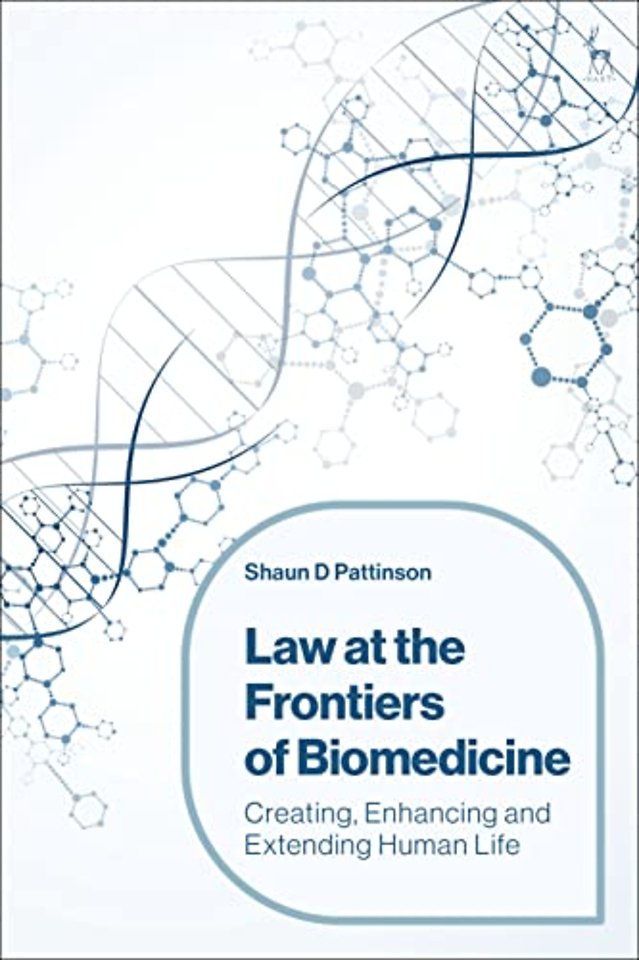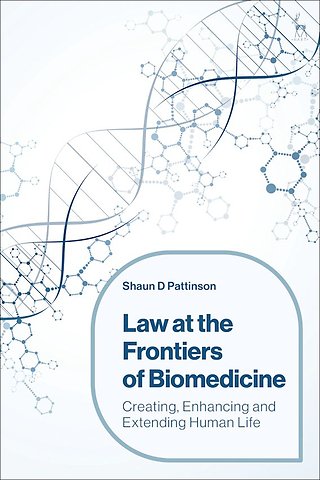Law at the Frontiers of Biomedicine
Creating, Enhancing and Extending Human Life
Samenvatting
How should judges and legislators address challenges arising at the frontiers of biomedicine? What if it became possible to edit the DNA of embryos for enhanced traits, gestate a fetus in an artificial womb, self-modify brain implants to provide new skills or bring a frozen human back to life?
This book presents an innovative legal theory and applies it to future developments in biomedicine. This legal theory reconceptualises the role of legal officials in terms of moral principle and contextual constraints: 'contextual legal idealism'. It is applied by asking how a political leader or appeal court judge could address technological developments for which the current law of England and Wales would be ill-equipped to respond.
The book's central thesis is that the regulation of human conduct requires moral reasoning directed to the context in which it operates. The link between abstract theory and practical application is articulated using future developments within four areas of biomedicine. Developments in heritable genome editing and cybernetic biohacking are addressed using Explanatory Notes to hypothetical UK Parliamentary Bills. Developments in ectogestation and cryonic reanimation are addressed using hypothetical appeal court judgments.
The book will be of great interest to scholars and students of medical/health law, criminal law, bioethics, biolaw, legal theory and moral philosophy.
Specificaties
Inhoudsopgave
MORAL AND LEGAL THEORY
1. Moral and Legal Values
1.1. Introduction
1.2. Types of Moralities
1.3. Refi ned Cultural Morality and the Law
1.4. Conclusion
2. Contextual Legal Idealism
2.1. Introduction
2.2. Justifying the Principle of Generic Consistency
2.3. Applying the PGC
2.4. Contextual Legal Idealism
2.5. Conclusion
PART II
CASE STUDIES
3. Heritable Genome Editing
3.1. Introduction
3.2. Genetic Science and Genome Editing
3.3. The Boundaries of Current Law and Policy
3.4. A Future Scenario
3.5. Application of the PGC
3.6. Hypothetical Bill
4. Ectogestation
4.1. Introduction
4.2. Ectogenesis and Ectogestation
4.3. The Boundaries and Uncertainties of the Current Law
4.4. A Future Scenario
4.5. Application of the PGC
4.6. Hypothetical Case
5. Cybernetic Biohacking
5.1. Introduction
5.2. Biohacking and Cybernetic Devices
5.3. The Law
5.4. Two Future Scenarios
5.5. Application of the PGC
5.6. Hypothetical Bill
6. Cryonic Reanimation
6.1. Introduction
6.2. Cryonic Science and Practice
6.3. Complexities Arising before the Point of Reanimation
6.4. Complexities Arising from the Point of Reanimation
6.5. A Future Scenario
6.6. Application of the PGC
6.7. Hypothetical Case
PART III
CONCLUSION
7. Legal Theory at the Frontiers of Biomedicine
7.1. Introduction
7.2. The World in which We Live
7.3. Technologies at the Frontiers of Biomedicine
7.4. Conclusion
Anderen die dit boek kochten, kochten ook
Net verschenen
Rubrieken
- aanbestedingsrecht
- aansprakelijkheids- en verzekeringsrecht
- accountancy
- algemeen juridisch
- arbeidsrecht
- bank- en effectenrecht
- bestuursrecht
- bouwrecht
- burgerlijk recht en procesrecht
- europees-internationaal recht
- fiscaal recht
- gezondheidsrecht
- insolventierecht
- intellectuele eigendom en ict-recht
- management
- mens en maatschappij
- milieu- en omgevingsrecht
- notarieel recht
- ondernemingsrecht
- pensioenrecht
- personen- en familierecht
- sociale zekerheidsrecht
- staatsrecht
- strafrecht en criminologie
- vastgoed- en huurrecht
- vreemdelingenrecht







